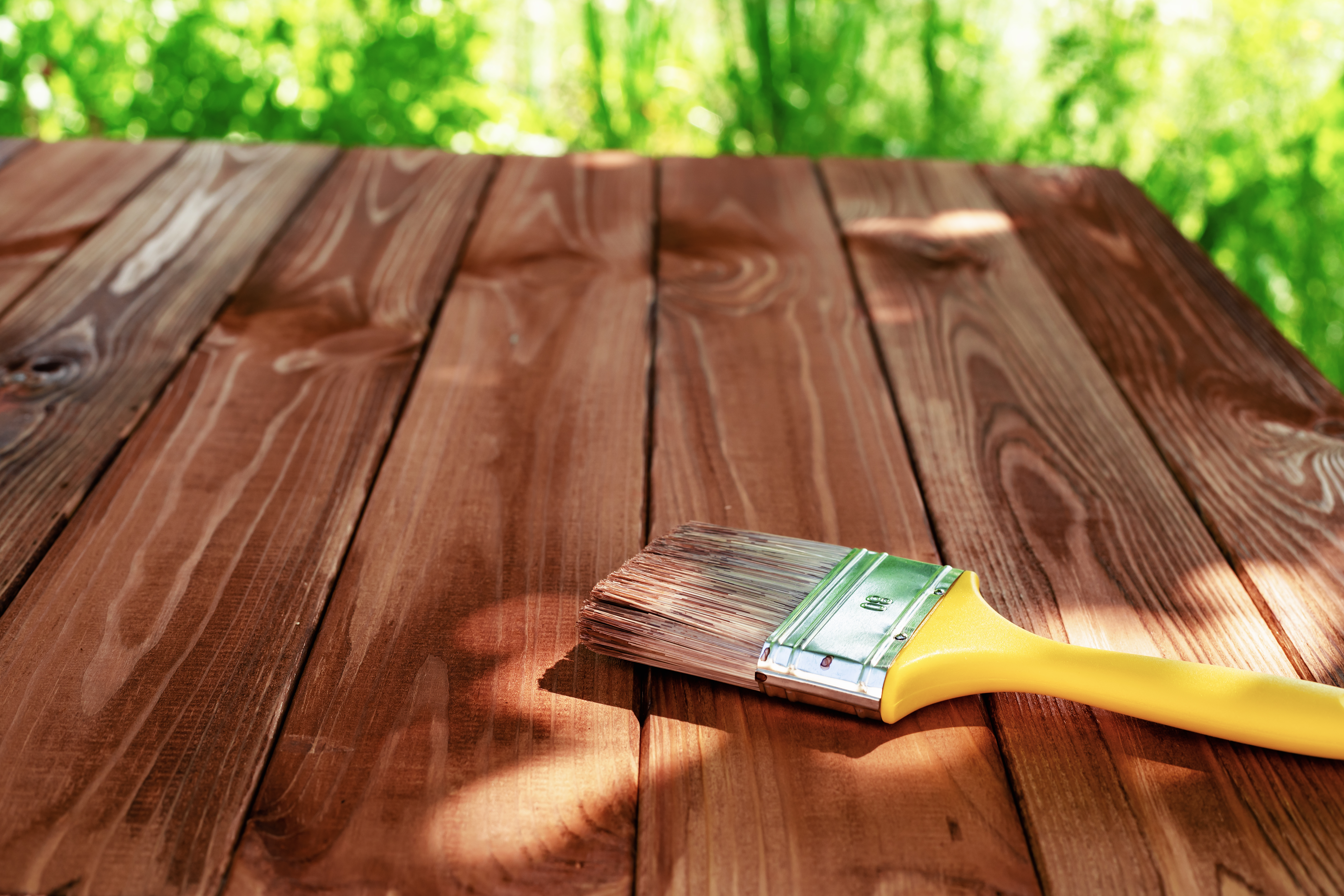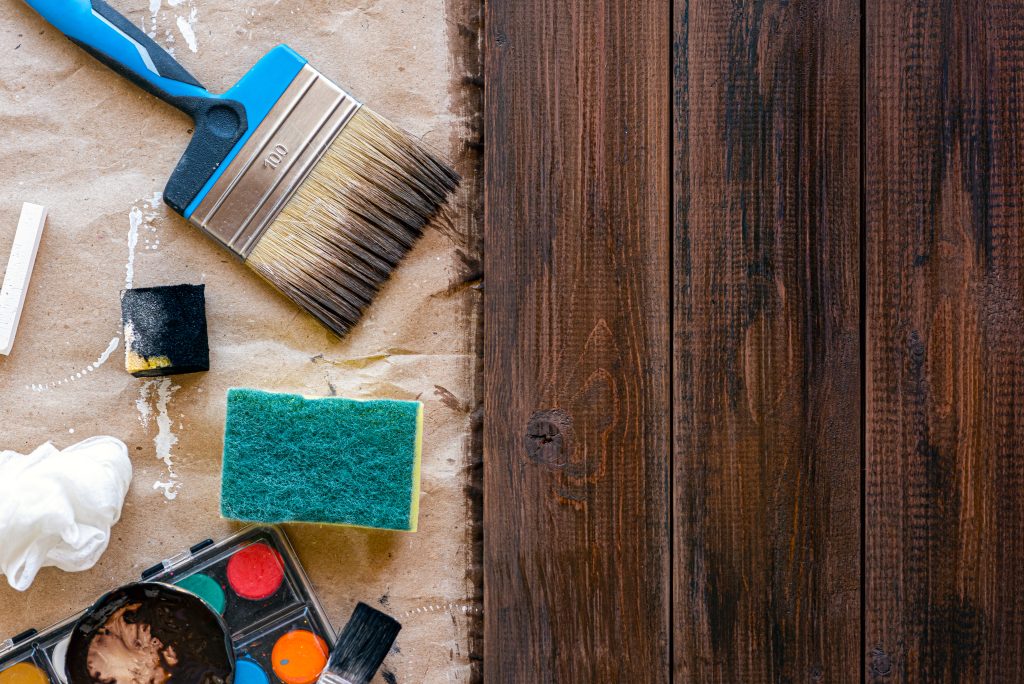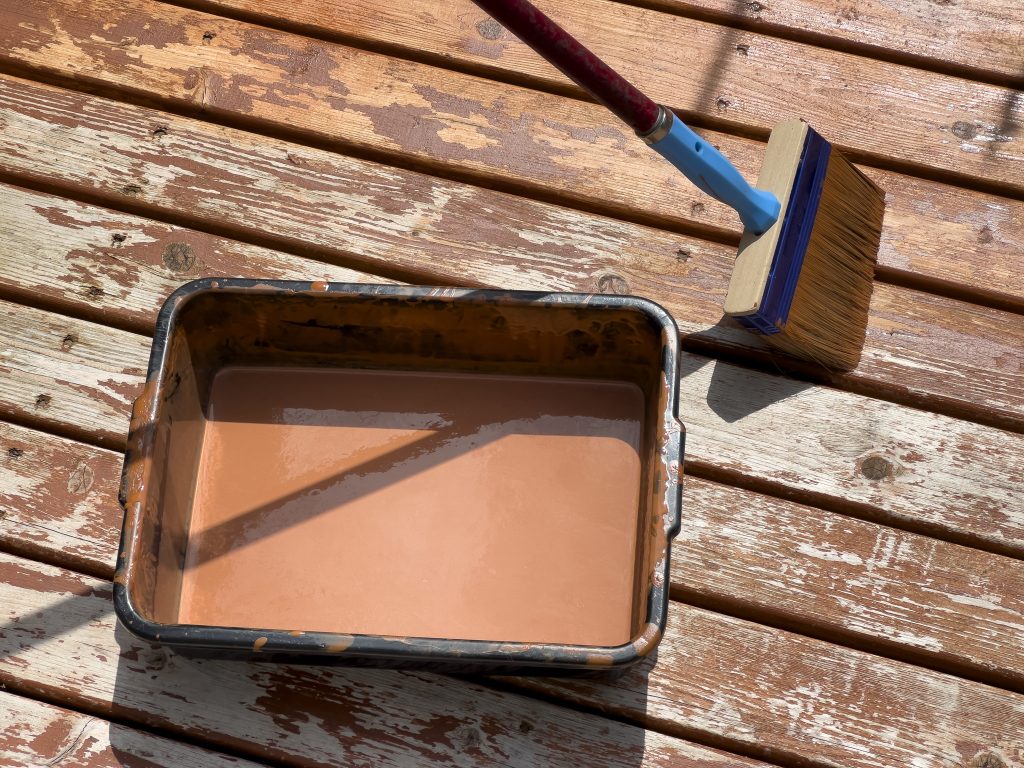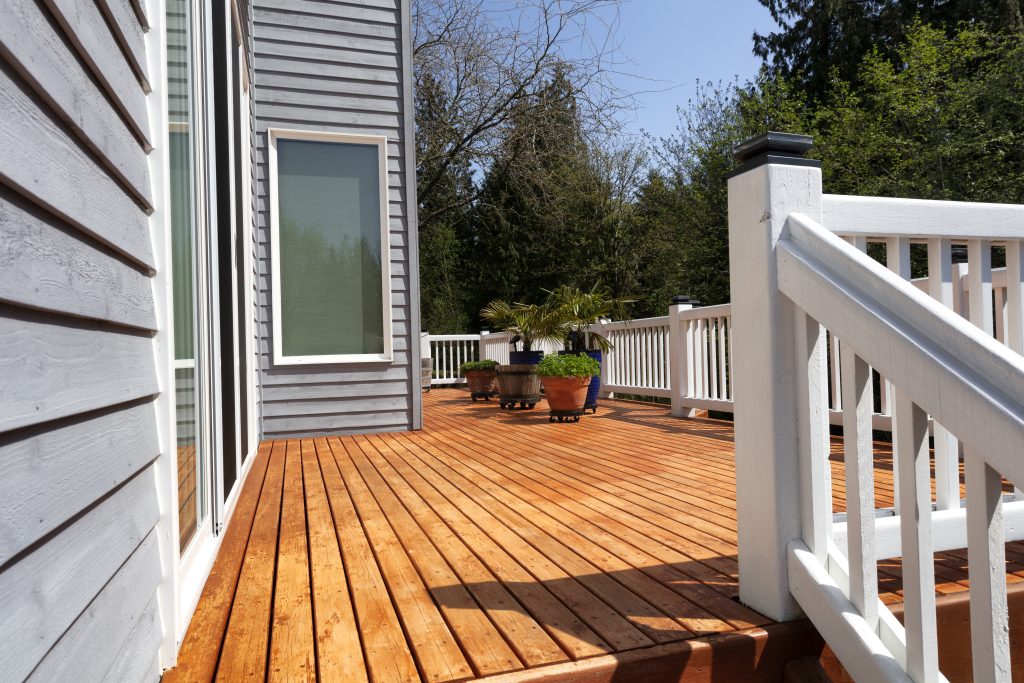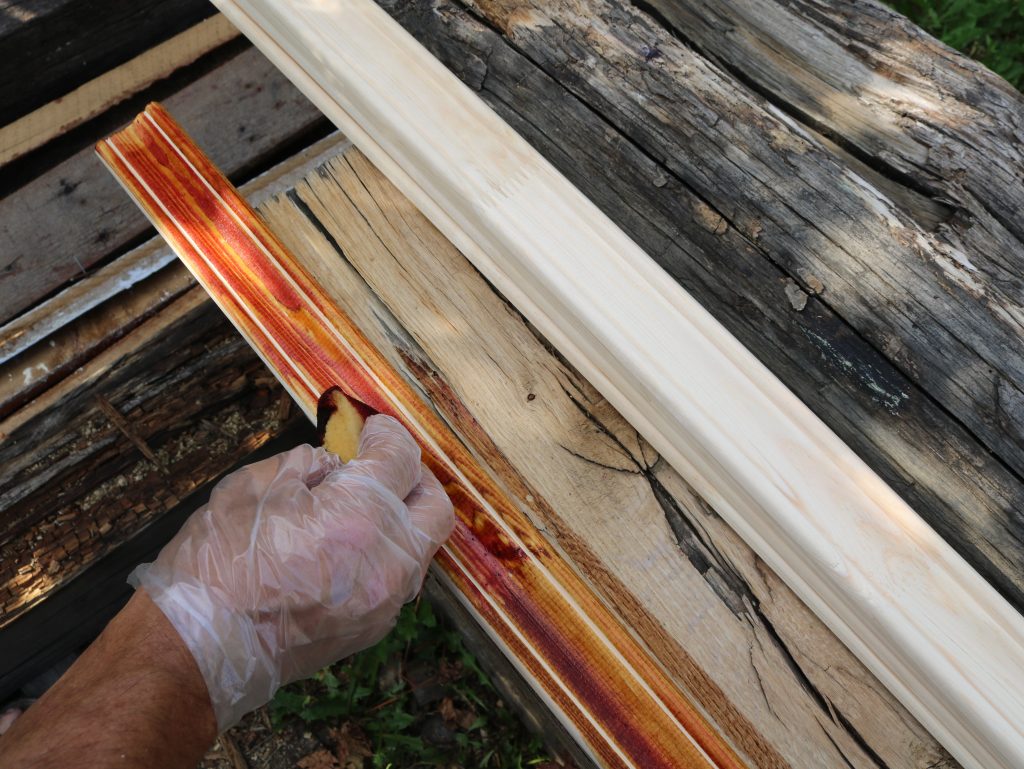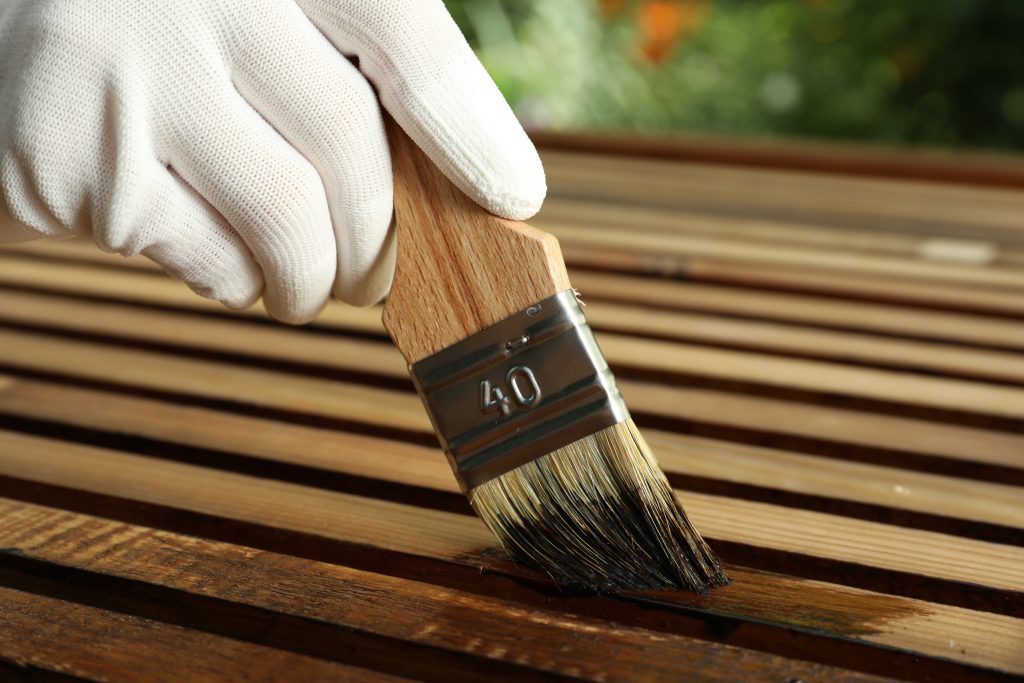Wood stains are a magical elixir for wood enthusiasts, transforming raw timber into a canvas of beauty. Whether you’re a seasoned woodworker or a DIY enthusiast, selecting the right wood stain can significantly impact the final look of your project. In this comprehensive buyer’s guide, we’ll delve into the world of wood stains, unraveling the secrets to making wood come alive.
Whether you’re embarking on a grand woodworking project, reviving old furniture, or simply aiming to protect and beautify your wooden surfaces, this comprehensive wood stain buyer’s guide will serve as your compass. With the right knowledge and tools, you’ll unlock wood’s full potential, revealing its inherent beauty for generations. Let the staining adventure begin!
Introduction to Wood Stains
Wood stains are a versatile and transformative tool in woodworking and DIY projects. They are the magic potion that can bring out the natural beauty of wood while protecting it from the elements and the wear and tear of daily use. In this introduction to wood stains, we’ll explore what they are, why they are used, and the various types available.
What is Wood Stain?
In its simplest form, wood stain is a type of finish applied to wood surfaces to alter their color and appearance. Unlike paint, which covers the surface of wood, stains penetrate the wood’s fibers, enhancing its natural grain and texture while adding color. Wood stains are typically made up of three main components:
- Pigments or Dyes: These are the colorants in the stain. They provide the desired hue and tone to the wood. Pigments are solid particles on the surface, while dyes are more transparent and penetrate deeper into the wood.
- Binders or Resins: Binders hold the pigments or dyes together and attach them to the wood. They also provide some level of protection to the wood’s surface.
- Solvents: Solvents are liquids that carry the pigments or dyes and binders. They help the stain penetrate the wood and evaporate as the stain dries.
Why Use Wood Stains?
Wood stains serve multiple purposes, making them a valuable addition to any woodworking or finishing project:
- Enhance Aesthetics: Stains highlight wood’s natural beauty by highlighting its grain patterns and figures. They can transform plain wood into a rich, visually appealing surface.
- Color Customization: Wood stains are available in a wide range of colors, allowing you to customize the appearance of your woodwork to match your décor or personal preferences.
- UV Protection: Some wood stains contain UV inhibitors that protect the wood from the sun’s harmful rays, preventing fading and discoloration.
- Waterproofing: Stains are often water-resistant, particularly important for outdoor wood surfaces like decks and fences.
- Preservation: Stains can help preserve wood by preventing moisture infiltration, which can lead to rot and decay.
- Durability: When combined with a suitable topcoat or sealer, wood stains can increase the durability of wood surfaces, making them resistant to scratches and stains.
- Environmentally Friendly: Water-based wood stains have lower VOC (volatile organic compounds) content than oil-based ones, making them a more environmentally friendly choice.
Types of Wood Stains
Wood stains come in various types, each with its unique characteristics and applications:
- Oil-Based Stains: These stains are known for their depth of color and durability. They are suitable for interior and exterior projects but may have a longer drying time and stronger fumes.
- Water-Based Stains: Water-based stains are more environmentally friendly, dry faster, and have lower odor. They are ideal for indoor projects but may not be as durable as oil-based stains for outdoor use.
- Gel Stains: Gel stains have a thicker consistency, making them easy to control and preventing drips. They are often used for vertical surfaces or when a more uniform color is desired.
- Transparent Stains: These stains allow the wood’s natural grain to show through, offering a subtle color enhancement while maintaining the wood’s appearance.
- Semi-Transparent Stains: Semi-transparent stains add color while allowing some of the wood’s natural grain to be visible.
- Solid Stains: Solid stains provide the most color coverage and protection. They are often used for outdoor applications where a painted look is desired.
Understanding the type of wood you’re working with and the desired result will help you choose the right wood stain for your project. Whether you’re refinishing furniture, staining a deck, or embarking on a custom woodworking endeavor, wood stains are your key to unlocking the full potential of wood’s beauty and functionality.
Choosing the Right Wood Stain
Selecting the perfect wood stain involves considering several key factors to ensure your project turns out just how you envision it. From the type of wood you’re working with to the desired finish and application method, each decision plays a crucial role in achieving the desired result. Let’s explore the essential considerations for choosing the right wood stain:
1. Consider the Wood Species
The type of wood you’re staining significantly influences the final appearance. Different woods have unique grain patterns, colors, and characteristics. Here’s what to keep in mind:
- Hardwoods: Woods like oak, maple, and cherry have pronounced grain patterns. Stains tend to enhance their natural beauty, showcasing the grain.
- Softwoods: Woods like pine and cedar have a softer grain. Stains can help add depth and color to these woods, giving them a richer look.
- Exotic Woods: Exotic woods may have unique and striking features. Transparent stains are often used to highlight their natural beauty.
- Wood Blends: Some projects use a combination of wood species. Consider how different woods will absorb and display the stain in such cases.
2. Interior vs. Exterior Use
Determine whether your project is for interior or exterior use. The environment will affect your stain choice:
- Interior Stains: These are formulated for indoor projects like furniture, cabinetry, and flooring. They may have lower levels of UV protection.
- Exterior Stains: Designed for outdoor use, these stains offer higher UV resistance and better protection against weathering. Common applications include decks, fences, and outdoor furniture.
3. Transparency and Opacity
Stains vary in terms of transparency and opacity, affecting how much the wood grain shows through:
- Transparent Stains: These stains allow the wood’s natural grain and color to shine. They provide subtle color enhancement.
- Semi-Transparent Stains: Offering a balance between color and grain visibility, semi-transparent stains add color while preserving the wood’s natural appearance.
- Solid Stains: Solid stains provide the most color coverage, resembling paint. They offer excellent protection but hide the wood’s grain.
4. Color Selection
Choose a stain color that complements your project and suits your aesthetic preferences. Stains are available in various colors, from light and natural hues to rich and dark tones. Consider creating samples on scrap wood to see how the stain will look on your project.
5. Stain Base: Oil vs. Water
Wood stains come in two primary bases: oil-based and water-based. Each has its advantages:
- Oil-Based Stains: Known for their durability and depth of color, oil-based stains penetrate the wood deeply. They are suitable for many projects but may have a longer drying time and stronger fumes.
- Water-Based Stains: These stains are eco-friendly, quick-drying, and have a lower odor. They are excellent for indoor projects but may not be as durable as oil-based stains for outdoor use.
6. Specialized Stains
Consider whether your project requires a specialized stain:
- Gel Stains: Gel stains have a thicker consistency, making them ideal for vertical surfaces or when you want a more uniform color.
- Deck Stains: Deck stains are formulated to withstand heavy foot traffic and outdoor elements, providing superior protection for decks and outdoor furniture.
- High-Traffic Areas: Choose a stain designed for durability and easy maintenance for high-traffic indoor areas like floors.
7. Sample Testing
Before committing to a particular stain, it’s advisable to test it on a small, inconspicuous area of your project or a scrap piece of the same wood. This allows you to see how the stain will interact with your specific wood and whether it achieves the desired color and finish.
8. Compatibility with Finish
Consider whether you will apply a clear finish or topcoat over the stain. Ensure that the stain you choose is compatible with the finishing product you plan to use. Compatibility ensures a smooth, long-lasting finish.
Choosing the right wood stain is crucial in bringing your woodworking or DIY project to life. By carefully considering the type of wood, transparency, color, application method, and environmental factors, you can achieve a stunning result that enhances the natural beauty of the wood while providing protection and longevity.
Preparation and Application of Wood Stain
Achieving a flawless finish with wood stain requires careful preparation and skillful application. Properly preparing the wood surface and applying the stain correctly are key steps in ensuring the desired color and finish. In this section, we’ll explore the essential aspects of preparation and application when working with wood stain:
Wood Preparation
- Surface Inspection: Start by examining the wood surface closely. Look for imperfections, scratches, or blemishes that must be addressed before staining.
- Sanding: Sand the wood surface using a progression of sandpaper grits, starting with coarse grit and gradually moving to finer grits. Sanding removes imperfections and opens the wood’s pores for better stain absorption.
-
- Tip: Always sand in the direction of the wood grain to avoid creating visible scratches.
- Clean the Surface: Remove all sanding dust, dirt, and debris from the wood surface. You can use a tack or lint-free cloth dampened with mineral spirits.
- Wood Conditioner (Optional): For certain woods like pine or fir that tend to absorb stain unevenly, consider applying a wood conditioner before staining. This helps achieve a more uniform color.
Applying Wood Stain
Once your wood is properly prepared, it’s time to apply the wood stain. Follow these steps for a successful application:
- Stir the Stain: Thoroughly stir the wood stain using a stir stick or a paint stirrer. Ensure that any settled pigments or solids are fully mixed.
- Test on a Scrap Piece: Before applying the stain to your project, it’s wise to test it on a scrap piece of the same wood. This test will help you assess the color and coverage of the stain.
- Apply Evenly: Use a brush, cloth, or foam applicator to apply the stain evenly toward the wood grain. Work with the grain to prevent streaks and uneven color.
-
- Tip: Wipe off excess stain with a clean cloth to avoid over-application, especially in areas with tight grain or corners.
- Wet-on-Wet Technique: Use a wet-on-wet technique when working with larger surfaces or in warm conditions. After applying the stain, immediately wipe off the excess with a clean cloth. This helps achieve a more consistent color.
- Working Time: Stains have varying working times. Some dry quickly, while others remain workable for a longer period. Follow the manufacturer’s instructions to ensure you apply and remove the stain within the recommended time frame.
- Dry Time: Allow the stain to dry completely before adding coats or applying a topcoat. Drying times can vary based on factors like temperature and humidity.
- Layering Stains (Optional): If you desire a specific color that isn’t achieved with a single coat, you can layer different stain colors. Apply additional coats of stain, allowing each coat to dry before adding the next.
- Apply a Finish (Optional): After the final coat of stain has dried, you can apply a clear finish or topcoat to protect and enhance the stained wood. Ensure compatibility between the stain and finish products.
- Dispose of Rags Safely: If you use cloth rags for staining, dispose of them properly. Stain-soaked rags can spontaneously combust if left in a pile. Lay them flat to dry before disposing them in a metal container with a lid.
Safety Tips
- When working with wood stains, ensure proper ventilation in your workspace to minimize fume exposure.
- Use appropriate personal protective equipment (PPE), including gloves and eye protection, to protect yourself from stains and chemicals.
- Dispose of used stain containers and materials following local regulations for hazardous waste disposal.
- Store wood stains and related products in a cool, dry place away from children and pets.
By following these steps and safety guidelines, you can achieve a beautifully stained wood finish that not only enhances the natural beauty of the wood but also provides protection and longevity to your woodworking projects.
Enhancing Wood Grain and Figure
One of the most captivating aspects of working with wood is its unique and intricate grain patterns. To truly make wood come alive, enhancing these natural features is essential. Whether you are a seasoned woodworker or a DIY enthusiast, you can achieve stunning results by accentuating wood grain and figure. In this section, we’ll explore techniques to enhance the beauty of wood:
- Grain Popping
Grain popping is a technique that involves raising the wood grain before applying the stain. This enhances the contrast between the wood’s earlywood (lighter portion) and latewood (darker portion), creating a more pronounced and vibrant grain pattern. Here’s how to achieve grain popping:
- Prepare the Wood: Start with well-sanded wood. Ensure it’s clean and free of any dust or debris.
- Moisten the Wood: Dampen a clean cloth with water and wipe the entire wood surface. Be careful not to soak the wood; a light dampening is sufficient.
- Let It Dry: Allow the wood to dry completely. As the wood dries, the grain will rise, becoming more pronounced.
- Sand Gently: Once the wood is dry, lightly sand the surface with fine-grit sandpaper to remove any raised fibers. Sand in the direction of the grain.
- Stain: Apply your chosen wood stain to the surface, following the staining process outlined earlier. The raised grain will absorb more stain, creating a striking contrast.
- Filling Grain
Sometimes, you may want to achieve a smooth, polished finish that conceals the wood’s grain rather than accentuating it. This is especially common when working on tabletops or furniture with a desired glassy, reflective surface. To fill the wood grain:
- Prepare the Wood: Start with well-sanded wood. Ensure it’s clean and free of any dust or debris.
- Apply Grain Filler: Use a grain filler or paste wood filler that matches the color of the wood. Spread it evenly across the wood’s surface, filling the grain pores.
- Scrape Excess: After the filler has dried (follow the manufacturer’s instructions), scrape the excess filler using a putty knife or scraper. This should leave the wood’s surface smooth and level.
- Sand Smooth: Sand the surface with fine-grit sandpaper until it’s uniformly smooth.
- Stain or Finish: Apply your chosen wood stain or finish. The surface will appear smooth and grain-free.
- Layering Stains
Layering stains is a technique that involves applying multiple coats of different stain colors to achieve a custom look. This can create depth, richness, and a unique appearance. Here’s how to layer stains:
- Choose Stain Colors: Select two or more stain colors that complement each other. Start with a lighter color as the base and darker colors for layering.
- Apply the Base Stain: Apply the lighter stain color as the base coat. Follow the standard staining process outlined earlier.
- Let It Dry: Allow the base coat to dry completely.
- Layer the Stains: Apply the darker stain colors over the base coat. You can brush on the stain and then wipe it off immediately for a subtle effect or leave it on longer for a more intense color.
- Blend and Experiment: Experiment with layering and blending different stain colors until you achieve the desired look. You can apply multiple layers for more complexity.
- Topcoat (Optional): Apply a clear topcoat or finish to protect the stained wood and enhance the color.
Remember that practice and experimentation are key to mastering these techniques. Try them on scrap wood or inconspicuous areas of your project first to get a feel for how they will affect the wood’s appearance. Whether you’re aiming for a dramatic grain pattern or a smooth, polished finish, these techniques can help you reveal the true beauty of wood.
Protecting and Preserving Wood
Once you’ve stained wood to perfection, protecting and preserving your hard work is crucial. Wood, though beautiful, is susceptible to damage from various sources, including moisture, UV rays, and physical wear. You must apply protective measures to ensure your stained wood maintains its luster and durability. In this section, we’ll explore how to safeguard your stained wood and extend its lifespan:
- Clear Wood Finishes
Clear wood finishes are protective coatings applied over stained wood to shield it from environmental factors while enhancing its appearance. There are various types of clear wood finishes to choose from, each with its unique characteristics:
- Varnish: Varnish is a durable, glossy finish suitable for indoor and outdoor use. It provides excellent protection against moisture, heat, and UV rays. It’s often used on furniture, doors, and boats.
- Polyurethane: Polyurethane is a versatile finish in water- and oil-based formulas. It offers superb protection against wear and moisture, making it ideal for floors, tabletops, and cabinets.
- Shellac: Shellac is a traditional finish that provides a warm and amber-toned appearance. It’s less durable than varnish or polyurethane and is often used for smaller indoor projects.
- Lacquer: Lacquer is a fast-drying finish that provides a glossy appearance. It’s commonly used on fine furniture and musical instruments.
- Wood Oil: Wood oils like tung oil or linseed oil penetrate the wood, enhancing its appearance while providing some protection. These finishes require periodic reapplication but are favored for their natural look.
- Wood Wax: Wood wax is applied as a protective layer over stained wood. It offers a low sheen and is commonly used on antique furniture.
When choosing a clear wood finish, consider the location and purpose of your project. Select a finish with UV protection and high moisture resistance for outdoor applications. For indoor furniture, prioritize aesthetics and choose a finish that complements the wood’s appearance.
2.Sealers and Topcoats
Sealers and topcoats can be applied over stained wood to enhance durability and appearance. These products provide an extra layer of protection and can be used with clear wood finishes. Common options include:
- Wood Sealer: A wood sealer is applied before the stain to create a barrier that prevents the stain from penetrating too deeply. This can result in more staining and color consistency.
- Topcoat: A topcoat is a protective layer applied over the stained and finished wood. It provides additional protection against scratches and wear.
- Wax Topcoat: Consider a wax topcoat for a low-sheen and natural look. It enhances the wood’s appearance while offering a degree of protection.
- Polycrylic: Polycrylic is a water-based topcoat that dries quickly and is suitable for indoor projects. It provides good protection without yellowing over time.
- Spar Urethane: Spar urethane is an excellent choice for outdoor projects, including marine applications. It offers exceptional UV resistance and moisture protection.
3. UV Protection
Exposure to UV rays from sunlight can cause wood stains to fade and degrade over time. To prevent this, consider the following UV protection measures:
- Use UV-Resistant Stains: Some wood stains are formulated with UV inhibitors. These stains provide added protection against fading caused by sunlight.
- Apply a UV-Resistant Topcoat: Apply a clear topcoat or finish with UV protection for overstained wood. This will create a barrier between the wood and UV rays, preserving the stain’s color and integrity.
- Keep Wood Covered: If possible, keep stained wood surfaces covered or shaded to reduce direct sunlight exposure.
- Regular Maintenance: Perform regular inspections and maintenance to promptly identify and address any signs of UV damage.
4. Regular Cleaning and Maintenance
To ensure the longevity of your stained wood, establish a regular cleaning and maintenance routine:
- Dust and Clean: Regularly dust your stained wood surfaces with a soft, dry cloth. Use a damp, lint-free cloth and a mild, wood-friendly cleaner for cleaning.
- Avoid Abrasive Cleaners: Avoid abrasive or harsh cleaning products that can scratch or damage the wood finish.
- Reapply Topcoat: Over time, topcoats and finishes may wear down. Periodically reapply these protective layers to maintain their effectiveness.
- Inspect for Damage: Routinely inspect your stained wood for any signs of wear, water damage, or other issues. Address any problems promptly to prevent further damage.
By taking these steps to protect and maintain your stained wood, you can ensure that your woodworking or DIY projects retain their beauty and functionality for years. Proper protection and care will preserve wood’s natural allure while shielding it from the rigors of daily use and the elements.
Maintaining Stained Wood: Tips for Long-Lasting Beauty
Stained wood, whether used for furniture, flooring, or other projects, can maintain its beauty and integrity for many years with proper care and maintenance. Regular upkeep helps preserve the finish, protects against wear and tear, and ensures that your stained wood remains a stunning addition to your home or workspace. In this section, we’ll explore key maintenance tips to keep your stained wood looking its best:
- Routine Cleaning
Regular cleaning is essential to prevent dirt and debris from accumulating on the wood’s surface, leading to scratches and a dull appearance. Follow these cleaning guidelines:
- Dust Removal: Dust your stained wood surfaces frequently using a soft, lint-free cloth or a microfiber duster. Dust can be abrasive and cause fine scratches over time.
- Gentle Cleaning: Dampen a clean, soft cloth with water and wipe down the wood surface for light cleaning. Ensure the cloth is only slightly damp, as excessive moisture can damage the wood.
- Wood-Friendly Cleaners: Use a mild, wood-friendly cleaner for more thorough cleaning when needed. Always follow the manufacturer’s instructions for any cleaning product you use.
- Avoid Harsh Chemicals: Avoid harsh or abrasive cleaning agents, as they can strip away the finish or damage the stain. Never use bleach, ammonia, or abrasive scrubbers on stained wood.
2. Protection Against Moisture
Moisture is one of the primary enemies of wood, potentially causing warping, swelling, or discoloration. Protect your stained wood from moisture-related issues:
- Use Coasters and Mats: Place coasters or mats under glasses, vases, and hot dishes to prevent water rings and heat damage.
- Wipe Spills Immediately: Accidental spills should be wiped up promptly to prevent liquids from seeping into the wood and causing staining or warping.
- Monitor Humidity: Maintain indoor humidity levels within 35% to 55% to prevent excessive moisture or dryness, which can affect wood.
- Seal Seams and Joints: For wood flooring, ensure that seams and joints are properly sealed to prevent moisture infiltration.
3. Avoid Sunlight Exposure
Direct sunlight can cause wood stains to fade, and the wood degrades over time. Protect your stained wood from UV damage:
- Use Curtains or Blinds: Install curtains or blinds to filter or block direct sunlight during peak hours of exposure.
- Rotate Furnishings: Periodically rotate furniture or rugs to ensure even exposure to light and prevent uneven fading.
- Apply UV-Resistant Film: Consider applying a UV-resistant film to windows to reduce UV radiation entering the space.
4. Regular Inspection
Routine inspections allow you to identify and address any issues promptly before they worsen:
- Check for Damage: Inspect your stained wood surfaces for signs of wear, scratches, or dents. Address any issues with touch-up kits or professional repairs as needed.
- Reapply Protective Finish: If the protective finish or topcoat appears worn or damaged, consider reapplying it to maintain effectiveness.
5. Recoating and Refinishing
Over time, the protective finish on stained wood may wear down. When this happens, consider recoating or refinishing the wood:
- Recoating: Some finishes can be recoated without stripping the existing finish. Consult the manufacturer’s recommendations for guidance on recoating.
- Refinishing: If the finish has deteriorated significantly or the wood appears marred, you may need to strip the old finish and refinish the wood entirely.
6. Seasonal Adjustments
Wood can expand and contract with changes in humidity and temperature. Make seasonal adjustments as needed:
- Humidifiers and Dehumidifiers: Use humidifiers or dehumidifiers to maintain stable humidity levels during different seasons.
- Gap Allowance: A small gap between wood pieces or planks accommodates natural expansion and contraction.
7. Professional Maintenance
For valuable or antique stained wood pieces, consider periodic professional maintenance:
- Restoration: Consult a professional woodworker or restorer for periodic restoration to address deeper issues such as scratches, dents, or finish wear.
- Re-Staining: If the wood stain has faded significantly, a professional can help you re-stain the wood to restore its original luster.
By following these maintenance tips and giving your stained wood the care it deserves, you can enjoy its beauty and functionality for generations. Regular cleaning, protection from moisture and sunlight, and addressing any issues promptly are key to preserving the allure of stained wood in your home or workspace.
Troubleshooting Common Issues with Stained Wood
Staining wood can transform it into a beautiful and durable material, but like any finishing process, issues can arise. Whether you’re a woodworking enthusiast or tackling a DIY project, understanding how to troubleshoot common problems with stained wood can save you time and frustration. In this section, we’ll address some common issues that may occur during the staining process and provide solutions for each:
- Uneven Stain Color
Problem: The stain color appears uneven, with some areas darker or lighter than others.
Solution:
- Surface Preparation: Ensure the wood surface is properly sanded and free of contaminants like dust or grease. Uneven staining often results from consistency in the wood’s surface.
- Pre-Stain Conditioner: Consider using a pre-stain wood conditioner for porous or blotchy woods. It helps the wood absorb the stain more evenly.
- Even Application: Apply the stain evenly and consistently across the entire surface, working with the wood’s grain. Avoid allowing the stain to pool in one area, leading to uneven coloring.
- Wipe Off Excess: After applying the stain, immediately wipe off any excess with a clean cloth. This helps prevent streaks and blotches.
- Blotching
Problem: Blotching appears as irregular, uneven, dark patches or streaks in the stained wood.
Solution:
- Pre-Stain Conditioner: A pre-stain wood conditioner can help prevent blotching by promoting even stain absorption.
- Stain Wiping Technique: When applying the stain, use wiping rather than brushing or spraying. This allows for better control and reduces the risk of over-applying in one area.
- Test on Scrap Wood: Before staining your main project, test the stain on a scrap piece of the same wood to identify and address any potential blotching issues.
- Streaking
Problem: Streaking appears as long, noticeable lines or streaks in the stained wood.
Solution:
- Even Application: Apply the stain evenly, working with the wood’s grain. Overlap each pass slightly to avoid creating noticeable lines.
- Proper Drying Time: Streaking can occur if the stain is not allowed to dry properly between coats or if it is overworked while still wet. Follow the manufacturer’s recommended drying times.
- Peeling or Flaking
Problem: The stain begins to peel or flake off the wood’s surface.
Solution:
- Proper Surface Preparation: Peeling or flaking often occurs due to inadequate surface preparation. Ensure that the wood is properly sanded and clean before staining.
- Compatibility: Verify that the stain and topcoat or finish are compatible. Some combinations may not adhere well and can lead to peeling.
- Strip and Refinish: If peeling has occurred, you may need to strip the wood of the old finish and stain, then refinish it properly.
- Bubbling
Problem: Small bubbles or blisters appear in the stained finish.
Solution:
- Excess Moisture: Bubbling is often caused by moisture trapped beneath the stain or finish. Ensure that the wood is completely dry before applying any finish.
- Proper Application: Avoid applying stain or finish in direct sunlight or extremely hot conditions, which can cause rapid drying and bubbling. Work in a controlled environment with moderate temperatures and humidity levels.
- Correct Thickness: Apply thin coats of stain or finish to prevent bubbles from forming during drying.
- Sanding Between Coats: Sand lightly between coats of finish to create a smooth surface and reduce the risk of bubbling.
- Strain Stain: Before applying, strain the stain through a fine mesh to remove any impurities that could cause bubbling.
If you encounter any of these common staining issues, don’t panic. With the right approach and troubleshooting techniques, you can often rectify the problem and achieve a beautiful, even finish on your wood project. Remember that practice and patience are valuable allies when mastering the art of staining wood.
Safety and Environmental Considerations for Staining Wood
Working with wood stains involves handling chemicals and materials that can pose health and environmental risks if not used properly. To ensure a safe and eco-friendly staining process, following best practices and taking necessary precautions is essential. In this section, we’ll explore safety and environmental considerations when staining wood:
Safety Precautions
- Personal Protective Equipment (PPE)
Always wear the following protective gear when working with wood stains:
- Safety Glasses or Goggles: Protect your eyes from splashes or fumes.
- Nitrile or Latex Gloves: Prevent skin contact with the stain and chemicals.
- Respirator or Mask: Use a respirator with the appropriate filter to shield your lungs from harmful fumes. Ensure it’s rated for organic vapor if you’re using oil-based stains.
- Long Sleeves and Pants: Cover exposed skin to minimize contact with stains and chemicals.
- Ventilation
Proper ventilation is crucial to reduce exposure to potentially harmful fumes. When staining wood:
- Work in a Well-Ventilated Area: Stain wood outdoors or in a well-ventilated workspace whenever possible—open windows and doors to allow fresh air to circulate.
- Use Exhaust Fans: If working indoors, use exhaust fans to help remove fumes—position fans to direct fumes away from your breathing zone.
- Respirator Use: If working in a confined space or with limited ventilation, wear a respirator with the appropriate filter.
- Handling Chemicals
Take care when handling and storing wood stain chemicals:
- Read Labels: Carefully read and follow the manufacturer’s instructions and safety guidelines on the stain container.
- Avoid Skin Contact: Always wear gloves to prevent direct skin contact with stains and chemicals.
- Use Chemicals Outdoors: Mix and handle chemicals outdoors to minimize indoor exposure.
- Stir Safely: When stirring stain, do so in a well-ventilated area. Avoid creating dust or splashing the stain.
- Fire Safety
Many wood stains are flammable. Be mindful of fire safety:
- No Smoking: Do not smoke while working with flammable stains.
- Flammable Storage: Store stains and related chemicals in a cool, dry place away from open flames and heat sources.
- Proper Disposal: Dispose of stain-soaked rags or materials safely. They can spontaneously combust if left in a pile. Lay them flat to dry before disposing them in a metal container with a lid.
Environmental Considerations
1 Eco-Friendly Stains
Consider using eco-friendly or low-VOC (Volatile Organic Compounds) wood stains. These stains are formulated with fewer harmful chemicals and emit fewer fumes. Look for stains labeled as “green” or “eco-friendly.”
2 Proper Disposal
Dispose of stain containers and materials according to local regulations for hazardous waste disposal. Many wood stains contain chemicals that should not be poured down drains or discarded in the trash. Contact your local waste management authority for guidance on proper disposal.
3 Reduce waste
Minimize waste by using only the stain you need for your project. Avoid over-purchasing or over-applying stains, as excess stains can contribute to environmental pollution when not properly disposed of.
4. Reusable Tools
Use reusable tools like brushes and applicators rather than disposable ones whenever possible. Clean and maintain your tools for extended use, reducing waste and environmental impact.
5. Sustainable Wood
Choose wood from sustainable sources, such as certified sustainable forestry practices. This helps support responsible wood harvesting and reduces the environmental impact of your woodworking projects.
6. Clean-Up Responsibly
After completing your project:
- Clean up any stains or chemical residues responsibly.
- Do not rinse stains or chemicals down sinks or drains.
- Dispose of cleaning materials following local regulations.
By following these safety and environmental considerations, you can protect yourself, minimize your environmental impact, and enjoy the art of staining wood safely and responsibly. Always prioritize safety and eco-friendliness throughout your woodworking endeavors.
Popular Wood Stain Brands
Several reputable brands offer staining options for staining wood to suit various preferences and project needs. Here are some popular wood stain brands known for their quality and variety of products:
- Minwax: Minwax is a well-known brand in the woodworking community. They offer diverse wood stains, including oil- water-based and gel stains. Minwax stains are known for their ease of use and excellent color options.
- Varathane: Varathane, a subsidiary of Rust-Oleum, produces high-quality wood stains. Their products include traditional oil-based stains as well as water-based and gel stains. Varathane is praised for its fast-drying formulas and vibrant colors.
- General Finishes: General Finishes is renowned for its water-based wood stains and topcoats. Their products are favored for their durability, ease of use, and environmentally friendly formulations. General Finishes offers a variety of stains, including stains suitable for exterior projects.
- Cabot: Cabot is a trusted brand for exterior wood stains, particularly for decks and outdoor furniture. They provide a range of oil-based and water-based stains designed to protect and enhance wood exposed to the elements.
- Sherwin-Williams: Sherwin-Williams offers a wide selection of wood stains under their Minwax and SuperDeck brands. Whether you’re staining interior woodwork or exterior decks, they have options for both.
- Behr: Behr is known for its interior and exterior wood stains. They offer a variety of colors and finishes, including transparent, semi-transparent, and solid stains suitable for different wood surfaces.
- Olympic: Olympic specializes in exterior wood stains and finishes. They offer products for staining decks, fences, and other outdoor wood structures. Olympic stains are often praised for their weather-resistant properties.
- Sikkens: Sikkens is a respected brand for high-performance exterior wood finishes. Their stains and coatings are favored for their durability and protection against UV rays and harsh weather conditions.
- TWP (Total Wood Preservative): TWP is known for its eco-friendly wood stains and preservatives. Their products are designed to protect and enhance the natural beauty of wood, making them popular choices for decks and outdoor furniture.
- Wolman: Wolman specializes in wood care products, including deck stains and sealers. They offer solutions for both interior and exterior wood projects, emphasizing protection and longevity.
- Rust-Oleum: Rust-Oleum, known for its versatile coatings, provides wood stains in various formulations, including oil-based and water-based options. Their products are accessible and suitable for DIY projects.
When selecting a wood stain brand, consider your specific project requirements, such as the type of wood you’re staining, the location of the project (interior or exterior), and the desired finish. It’s also a good practice to read product reviews and follow manufacturer recommendations for application and preparation to achieve the best results.
Frequently Asked Questions (FAQs)
Certainly! Here are some frequently asked questions (FAQs) related to wood staining:
1. What is wood staining?
Wood staining is a process that involves applying a colored pigment or dye to wood surfaces to enhance their appearance. Stains can add color, depth, and richness to the wood, allowing its natural grain and texture to show through.
2. Can I stain any wood?
Most types of wood can be stained, but the results may vary depending on the wood’s species and characteristics. Some woods, like oak and walnut, take stain more evenly and vibrantly, while others, like pine, may require additional preparation to achieve the desired results.
3. What’s the difference between oil-based and water-based stains?
Oil-based stains are made with a mineral spirit or solvent base and typically provide deeper penetration and richer colors. On the other hand, water-based stains use water as a base, are generally more eco-friendly, and have a faster drying time. The choice between them depends on personal preference and the project’s requirements.
4. How do I prepare wood for staining?
Proper wood preparation is crucial for successful staining. It involves sanding the wood to a smooth surface, removing any dust, dirt, or contaminants, and ensuring it is dry and moisture-free.
5. Can I stain over an existing stain?
Yes, you can stain over an existing stain, but it’s essential to ensure the old stain is in good condition and properly cleaned. Sometimes, you may need to strip the old stain before applying a new one.
6. How do I choose the right stain color?
Choosing the right stain color depends on your project’s aesthetics and the wood’s natural color. Testing the stain on a scrap piece of the same wood or an inconspicuous area is advisable to see how it looks before applying it to the entire project.
7. What is the drying time for wood stains?
The drying time for wood stains varies depending on the type of stain, environmental conditions, and the wood’s porosity. Generally, oil-based stains can take 8-24 hours to dry fully, while water-based stains dry much faster, often within 2-4 hours.
8. Do I need to apply a topcoat or finish after staining?
A topcoat or finish is recommended to protect the stained wood from wear, moisture, and UV damage. The choice of finish (varnish, polyurethane, shellac, etc.) depends on your project’s needs and desired appearance.
9. Can I stain outdoor wood projects?
There are wood stains designed specifically for outdoor use, such as decks, fences, and outdoor furniture. These stains protect against the elements and UV radiation.
10. How do I clean stained wood surfaces?
Clean stained wood surfaces with a soft, lint-free cloth or a mild, wood-friendly cleaner. Avoid abrasive or harsh cleaning agents that can damage the finish.
11. Is wood staining environmentally friendly?
Some wood stains contain volatile organic compounds (VOCs) that can harm the environment and health. Consider using low-VOC or eco-friendly wood stains for a more environmentally conscious choice.
12. Can I stain wood with a brush or a rag?
You can apply stains with various tools, including brushes, rags, sponges, or sprayers. The choice depends on your project, the stain type, and the preferred application method.
These FAQs provide a good starting point for understanding wood staining. If you have specific questions about your project, it’s always a good idea to consult experts at your local home improvement store or a professional woodworker for personalized guidance.
Conclusion: Your Wood Staining Journey Begins
In conclusion, embarking on a wood staining project can be a fulfilling and creative journey, allowing you to transform ordinary wood into a work of art. Whether you’re staining furniture, cabinets, flooring, or outdoor structures, the key to success lies in understanding the process, choosing the right materials, and following best practices.
Here’s a summary of the essential points covered in this wood staining guide:
- Understanding Wood Staining: Wood staining applies color to wood surfaces to enhance their appearance while preserving the natural grain and texture.
- Choosing the Right Stain: Consider factors like wood type, project location (indoor or outdoor), desired finish, and environmental impact when selecting a wood stain.
- Surface Preparation: Properly preparing the wood surface through sanding and cleaning is crucial to achieve an even more attractive stain.
- Applying the Stain: Apply the stain evenly, following the wood’s grain. Wipe off excess stains to avoid blotching and streaking.
- Finishing and Protection: Apply a protective topcoat or finish to seal and safeguard the stained wood from wear, moisture, and UV damage.
- Troubleshooting Common Issues: Be prepared to address common staining problems such as uneven color, blotching, streaking, peeling, and bubbling with the appropriate solutions.
- Safety and Environmental Considerations: Prioritize safety by wearing protective gear, ensuring proper ventilation, and handling chemicals responsibly. Choose eco-friendly stain options and dispose of materials according to local regulations.
- Frequently Asked Questions (FAQs): Familiarize yourself with FAQs related to wood staining to address common queries and concerns.
With these guidelines and insights, your wood staining journey is set to begin with confidence. Remember that practice and patience are essential as you refine your staining skills. Whether you’re rejuvenating old furniture, crafting custom pieces, or enhancing the beauty of your home, wood staining offers a world of possibilities for expressing your creativity and preserving the timeless elegance of wood. So, roll up your sleeves, gather your materials, and let your woodworking adventures commence. May your projects be as beautiful as they are rewarding!

